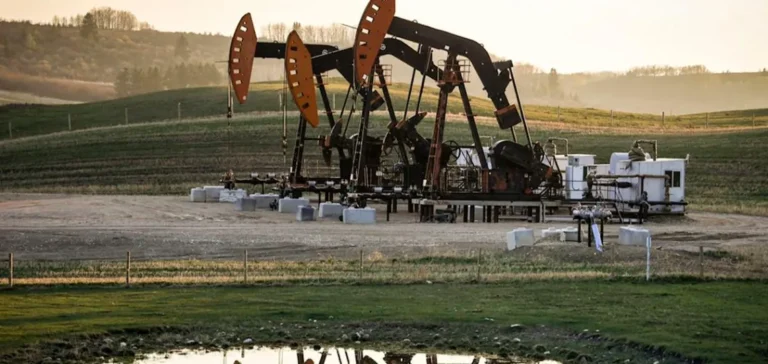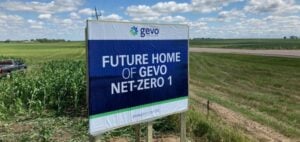The Alberta carbon market is experiencing unprecedented turbulence with prices falling more than 55% year-over-year. Credits in the Technology Innovation and Emissions Reduction (TIER) system now trade around 24.50 Canadian dollars per tonne of CO2 equivalent, down from 55 dollars at the same time last year. This collapse reflects a structural imbalance between abundant supply and insufficient demand that could compromise the system’s equivalence with federal standards. Market participants estimate accumulated inventory represents about three years of normal consumption, a situation partly stemming from the transition between the former Carbon Competitiveness Incentives Regulation system and the current TIER program.
A structural oversupply defying market mechanisms
The 164.7 megatonnes of regulated emissions in 2023 mark a 3% increase from the previous year, the highest level since the program came into force. Regulated facilities used a record number of credits for compliance, with 7.2 million offset credits and 4.1 million emission performance credits submitted in the last period. Despite this increased usage, oversupply has persisted for twelve consecutive months, creating what one trader calls a “persistent problem” for market stability. The Alberta government has no mechanism to withdraw or reintroduce credits based on market conditions, leaving supply and demand forces to operate without regulatory intervention.
The credit usage limit for compliance will gradually increase from 70% in 2024 to 80% in 2025, then 90% from 2026 onwards. This expansion should theoretically stimulate demand, but current projections suggest the market won’t regain balance until the end of the decade. Credits now have a reduced lifespan of five years, down from eight to nine years previously, a measure intended to encourage rapid usage and maintain an active market.
Carbon sequestration projects threaten to worsen imbalance
Alberta has granted pore space evaluation agreements to 25 major carbon capture and storage (CCUS) projects that could sequester between 50 and 60 million tonnes of CO2 annually once operational. These projects, scheduled to come online between 2024 and 2030, would potentially generate a volume of credits several times greater than anticipated demand from TIER-regulated facilities. The system has introduced two new types of credits to facilitate these projects: sequestration credits and capture recognition tonnes, which can be used under both TIER and federal Clean Fuel Regulations.
The highest-emitting sectors include in-situ electricity generation at 35.9 megatonnes, oil sands at 35.8 megatonnes, and coal-fired power plants at 20.1 megatonnes. For oil sands operations, the annual tightening rate will increase to 4% in 2029 and 2030, compared to 2% for other sectors. This sectoral differentiation aims to accelerate decarbonization of the province’s most carbon-intensive activities.
Confrontation with Ottawa threatens regulatory stability
The Alberta government froze its industrial carbon price at 95 Canadian dollars per tonne on May 12, citing economic pressures including U.S. tariffs on Canadian energy. This decision creates a growing gap with the federal price that must reach 170 dollars by 2030, increasing by 15 dollars annually. Premier Danielle Smith openly opposes federal climate policies, particularly the proposed cap on oil and gas sector emissions and the Clean Electricity Regulations.
The equivalency review scheduled for December 2026 represents a critical inflection point for the market. If the federal government determines that the Alberta system no longer meets equivalency criteria, particularly in terms of pricing stringency and emissions coverage, it could impose the federal carbon pricing system. Such a scenario would cause a sharp price increase to the federal level of 95 dollars, representing nearly a 300% increase from current levels.
Compliance mechanisms offer limited flexibility
Regulated facilities have five options to meet their obligations: on-site reductions, emission performance credits generated by outperforming facilities, offset credits from approved projects, sequestration credits for CCUS projects, and payment to the TIER fund. The Cost Containment program offers relief to facilities where compliance costs exceed 3% of sales or 10% of profits, a mechanism designed to protect industrial competitiveness.
Since 2007, more than 67 million offset credits have been retired for compliance obligations in Alberta, with an additional 24 million available on the market. Credits come primarily from agricultural management, renewable energy production, CCUS, and methane reductions from pneumatic devices. Over 400 carbon offset projects have been registered and 18 different protocols are available for generating credits.
Transactions occur through two separate registries: the Alberta Emission Performance Credit Registry for EPCs and the Alberta Emissions Offset Registry for offset credits. ICE Futures also offers futures contracts on EPCs, adding a financial hedging dimension to the physical market. Daily assessments follow strict specifications with volumes of 20,000 to 100,000 metric tonnes of CO2 equivalent and a 16:00 Central Time timestamp.
Participants anticipate prices could rebound if aggressive regulatory changes are avoided and demand increases according to projections. However, political uncertainty surrounding the 2025 federal elections and the possibility of a change in government add additional volatility to market prospects. A Conservative government could revise or cancel several key climate policies, fundamentally altering the supply and demand dynamics for Alberta credits.






















